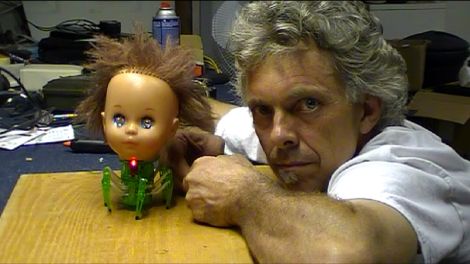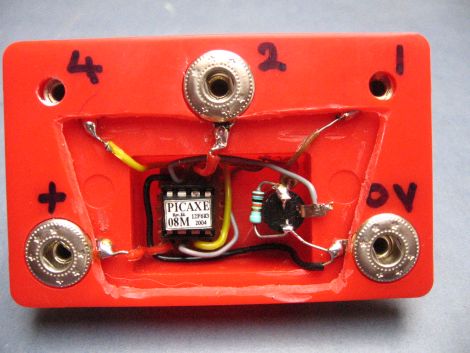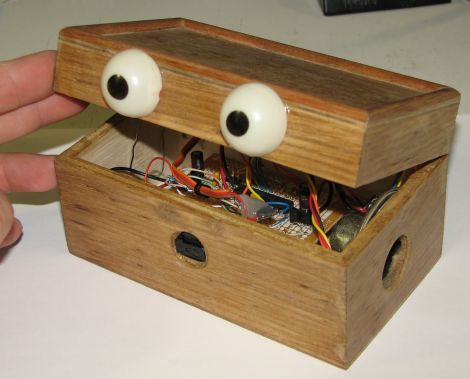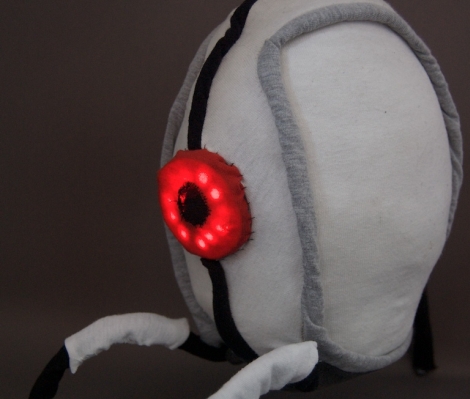
For this week’s hack, [Dino] was working on a mechanical cat toy, but the project fell apart towards the end for some reason or another. With time running out, he had to come up with something on pretty short notice, using whatever he happened to have on hand. Luckily he picks up some seriously weird stuff at the local thrift store and had a disembodied doll’s head kicking around for this last minute project.
Taking a cue from Toy Story’s [Sid Phillips], [Dino’s] doll’s head hexapod is as creepy as it is simple. He had a remote controlled hexapod from RadioShack sitting around, and thought it would be fun to combine it with the doll’s head. He replaced the dolls eyes with a handful of LEDs, which are green as the hexapod retreats, but glow a bright red as it advances towards you. The only way it could be any creepier is if [Dino] added a voice box that plaintively called for “mommy” as the doll crawls around!
It’s a relatively goofy project, but it gave us a good chuckle. The most disturbing highlight of the build is when [Dino] removes the doll’s eyes using a wood drill bit around the 6:00 mark.
If you’re looking to kill a few minutes, be sure to check it out – [Dino’s] work is entertaining as always.
Continue reading “R/C Hexababy Is Guaranteed To Give You Nightmares”
















